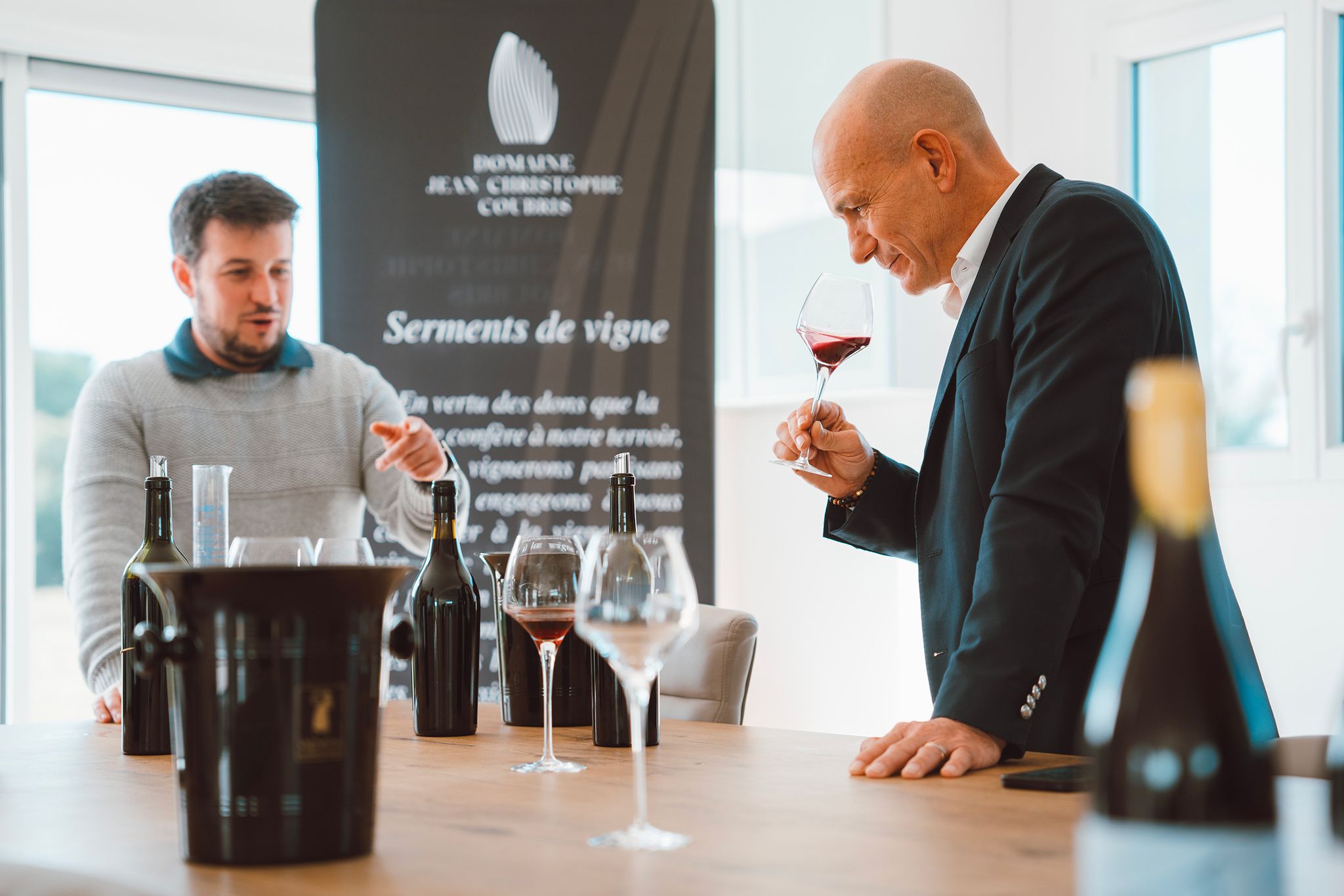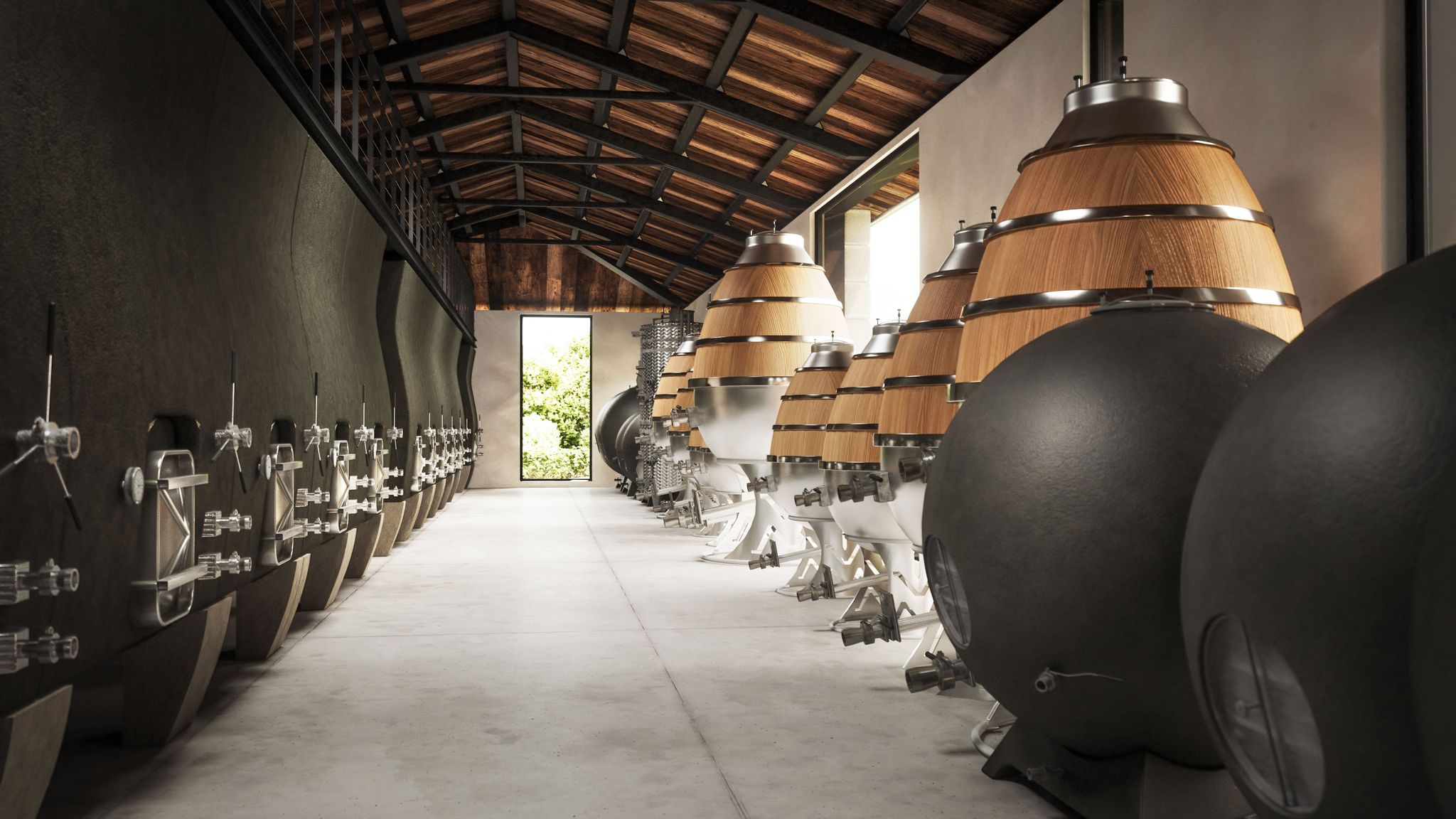

Midway between Margaux and Saint-Julien, Moulis hides a secret land of wines and legends in the heart of Haut-Médoc.
IN Médoc
Natural elements
In the heart of Domaine Jean-Christophe Coubris, the name of Château La Mouline evokes the memory of mills. Not only a linguistic heritage. The estate’s 62 acres sprawl out between a windmill and a water mill. The vines have long since replaced the cereals and the wind, as master-regulator, contributes to the remarkable climate of the place. Halfway between Margaux and Saint-Julien, the Domaine Jean-Christophe Coubris occupies the southern slope of two ridges, one clay-limestone and the other gravelly. The vine is particularly well served here, it roots deeply in the well-drained ground, feeding and capturing the essence of the soil as it goes. It also enjoys a generous exposure to the sun which keeps the threats of frost at bay.






IN THE VINEYARD
Nurturing the grapes
All four traditional grape varieties are represented here: Cabernet Sauvignon, Cabernet Franc, Merlot and Petit Verdot. Each is planted according to how well it is suited to the prevailing soil and the sun. The estate is subdivided to meet the specific needs of each vine and from pruning-back to harvesting, the vine stock is dealt with in the most appropriate way for its type, age, vigour and orientation. This is the best way of cultivating to ensure grapes of exceptional quality.
The HVE (High Environment Value) certified vineyard currently converting to organic status, is run in accordance with agroecology principles. Soil conservation, fostering biodiversity and species interaction, reducing input, optimising resources – all practices aimed at promoting a sustainable and respectful viticulture.


in the cellars
Vow to persevere
Thanks to its recently renovated cellar, the Jean-Christophe Coubris estate manages to perpetuate the traditional skills and steps of winemaking, whilst modernising the process. Grapes, harvested both by hand and by machine, are carefully sorted before being put into steel vats, first for alcoholic and then malolactic fermentation. Following maceration the juices are mixed together in casks and left to age for 12 to 18 months – allowing time to do its job. It is with the same patience and uncompromising attention that, each and every season, for six generations, the Coubris family and its partners have created the best possible wines.
The rewards for such perseverance and consistency has seen Chateau La Moline classified as Cru Bourgeois every year since 1932 and then reclassified in 2003. It joined the ranks of the Crus Bourgeois Supérieurs in 2020. A trajectory which has contributed to both national and international recognition of the estate.


A sustainable architectural
Redesign.
“From vine stock to wine glass, the process of wine production permeates our architectural concept”.
To reflect the work undertaken in the vineyard at Moulis-en-Médoc, the revival of chateau la Mouline involves architectural fundamentals which bring together territory and landscape. They arrange its usability and materials and respect its biodiversity. Reflecting its family history and human values, they bring to the Jean-Christophe Coubris estate, a Totemic statement for its territory. The proposal comprises one sole rational square space. Like a cloister, the four wings of the building give way to a central area in which the cellar casks are produced. This double-height space is the very heart of the project. Its dimmed and hushed atmosphere houses each vintage until it is ready to reveal its unique personality.


The clean lines of the building’s facades will be sprayed with burnt wood. This 100 percent natural, living material is the product of burning solid wood. We use it so that the architecture fits in with and respects its site, nature and more broadly the work of the vine. Its introduction, unity and substance will contribute to a balanced and harmonious design. New perspectives and discoveries about this production tool will lie at the heart of any visits, offering a rich bouquet in meaning and sensitivity to Jean-Christophe Coubris’ new estate.
Vitiforestry &
“Cheval des vignes”
The rebirth of the estate will also involve two new ways of working the vines.
Vitiforestry, by planting trees around our vineyard plots, will allow us to purify our soil and drain our water resources.
This intelligent cultivation will prevent frosts in our vineyards by directing the air currents. The “monoculture” landscape will also be reshaped with the creation of small clos.
The vineyard horse; this ancestral animal traction technique embodying the respect of our soils and the environment, will be implemented on carefully selected plots of the estate, to obtain vigorous and healthy vines.


